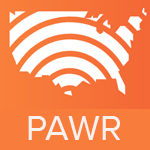 A new wireless testbed in Salt Lake City uses an open programmable approach, with the goal of making it easier for academic and industry researchers to develop new antennas, to experiment with network slicing and to conduct other research in a real-world environment. The project comes from the Platforms for Advanced Wireless Research (PAWR) program, which is funded by the National Science Foundation (NSF) and a consortium that includes the four major wireless carriers, along with their suppliers. The PAWR wireless testbed now encompasses the University of Utah campus and eventually will include other parts of the city as well.
A new wireless testbed in Salt Lake City uses an open programmable approach, with the goal of making it easier for academic and industry researchers to develop new antennas, to experiment with network slicing and to conduct other research in a real-world environment. The project comes from the Platforms for Advanced Wireless Research (PAWR) program, which is funded by the National Science Foundation (NSF) and a consortium that includes the four major wireless carriers, along with their suppliers. The PAWR wireless testbed now encompasses the University of Utah campus and eventually will include other parts of the city as well.
The NSF was the driver behind the creation of the PAWR project, noted Jacobus Van der Merwe, a professor at the University of Utah who is also the principal investigator on the Salt Lake City project. The NSF was interested in getting the US to “do more research in mobile and wireless, specifically more hands-on research,” he told us in an interview.
“NSF in the past found that they were funding a lot of researchers that had to recreate platforms inside a lab and at sub-scale,” commented Bill Wallace, executive director of US Ignite, a non-profit organization led by the NSF that seeks to spur technology innovation, in the interview. “Ultimately the goal is to speed up the process of research breakthroughs to commercialization to help consumers.”
The PAWR program is jointly managed by US Ignite and Northeastern University. The NSF provided $50 million in support for the program over seven years, and the 29-company industry consortium provided an additional $50 million in cash and in-kind contributions.
PAWR Wireless Testbed
Van der Merwe described the “city-scale” Salt Lake City testbed for us. The testbed, he said, is comprised of rooftop and fixed endpoints using infrastructure that is software-defined end to end. Base stations operate at a range of frequencies and connect to an edge computing facility on campus.
Researchers, he explained, “can come in remotely, request resources from this platform, and the control framework would behind the scenes allocate the resources for them and [configure] them according to specifications provided.”
Currently, the endpoints on the network are in fixed locations, but plans call for enabling mobility in 2020, Van der Merwe said. Mobility plans include installing endpoints on buses and eventually on other vehicles.
The buses take the same route throughout the day, which should make them well suited for supporting experiments requiring repeatability. Van der Merwe noted, for example, that this approach could be used to study the impact of changes in the weather on various operations of wireless networks.
The PAWR program is making profiles available to testbed users to simplify the process of setting up a test network. Van der Merwe likened the profiles to recipes that “describe the resources needed to tell the control framework what needs to be configured.” Software might be needed in different places in the network, and the profile describes these requirements. Profiles are already available for 4G and 5G base stations and other elements of the network. Moving forward, participants will have the option of sharing or not sharing the profiles they create with other participants.
Van der Merwe said it’s too soon to know how extensively the major wireless carriers will use the Salt Lake City testbed. But it would seem to be a useful resource for them.


